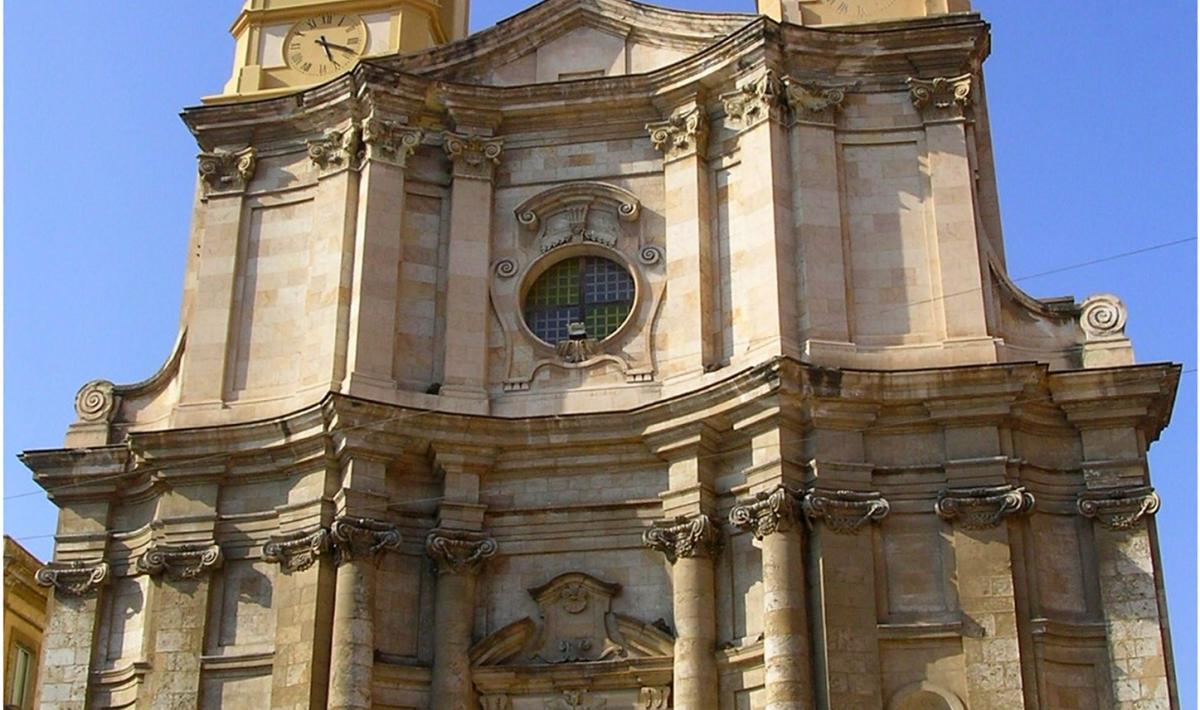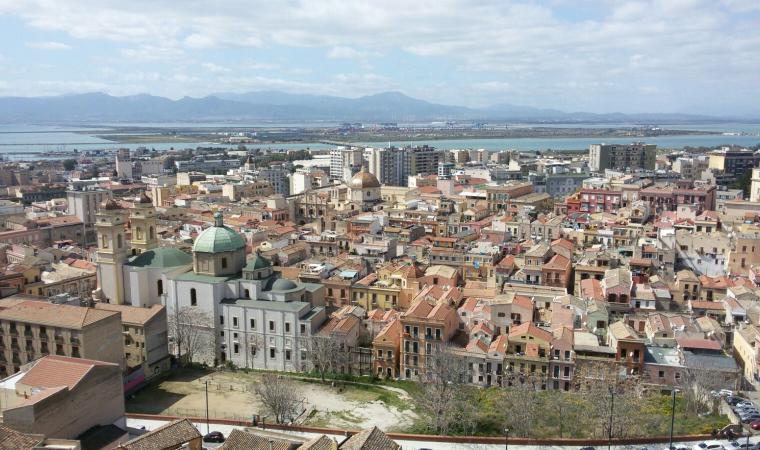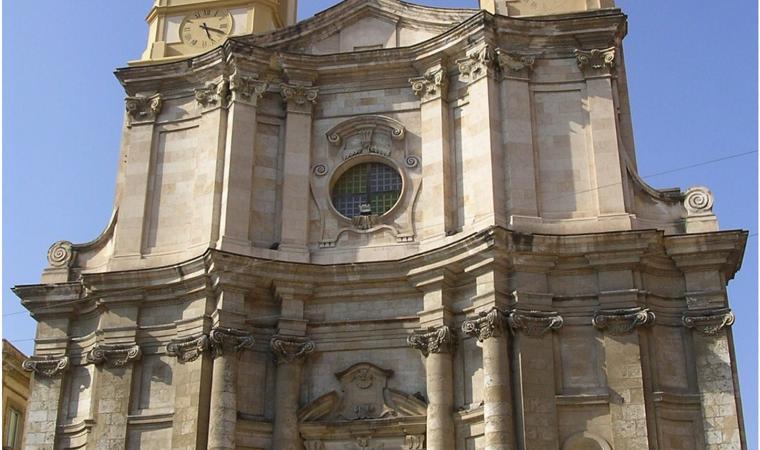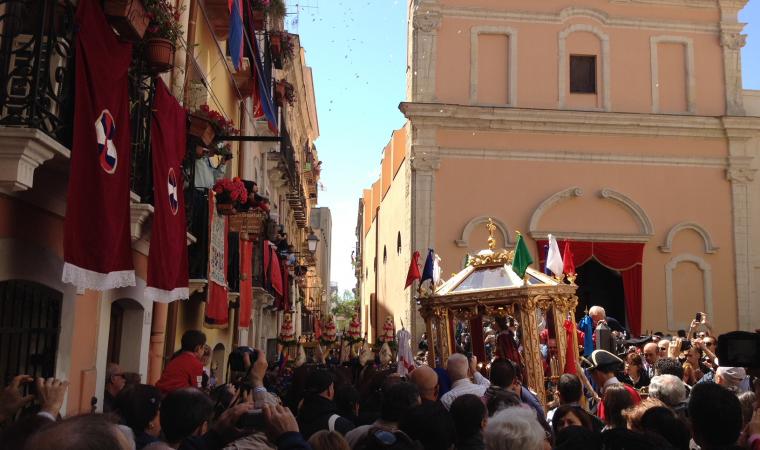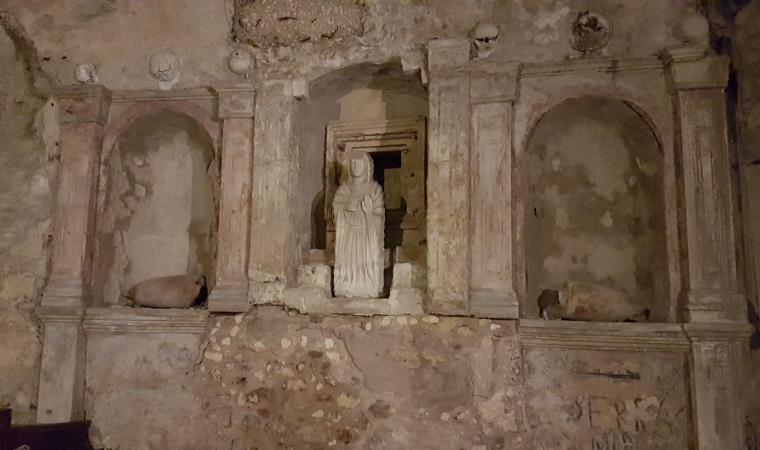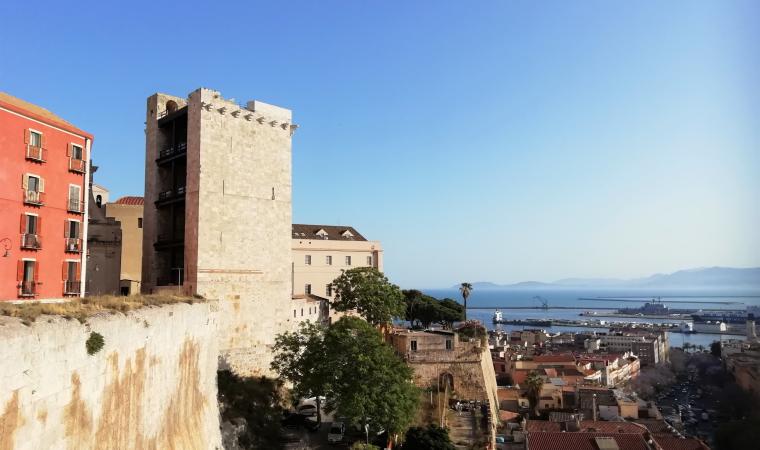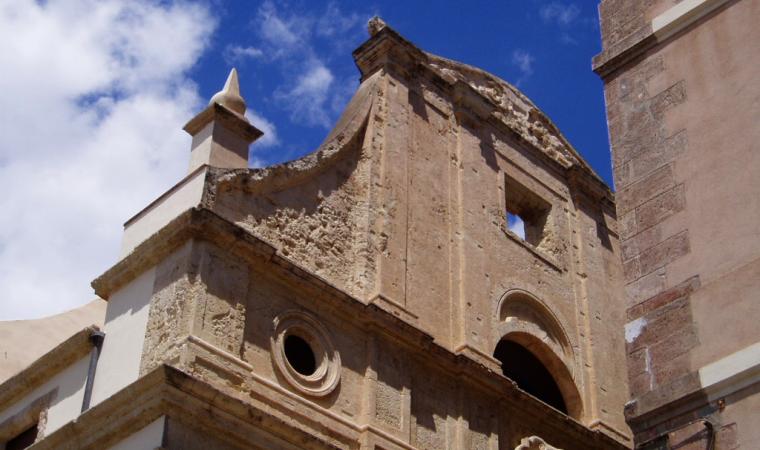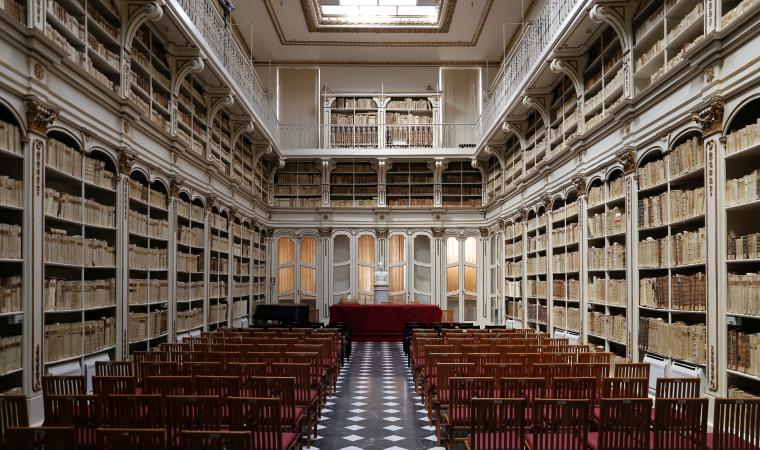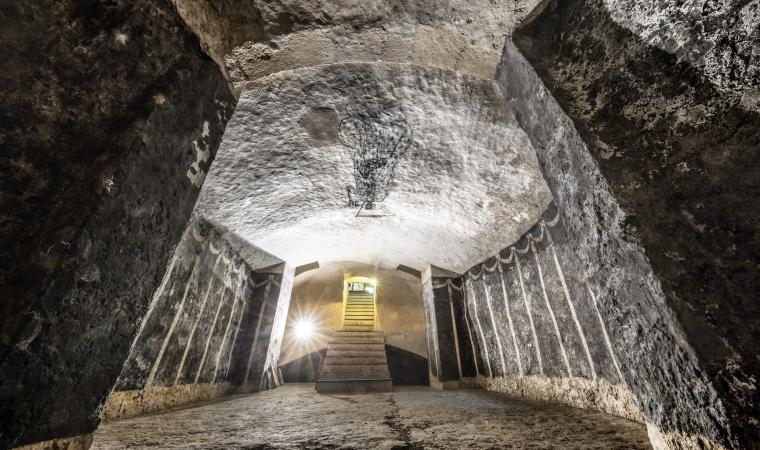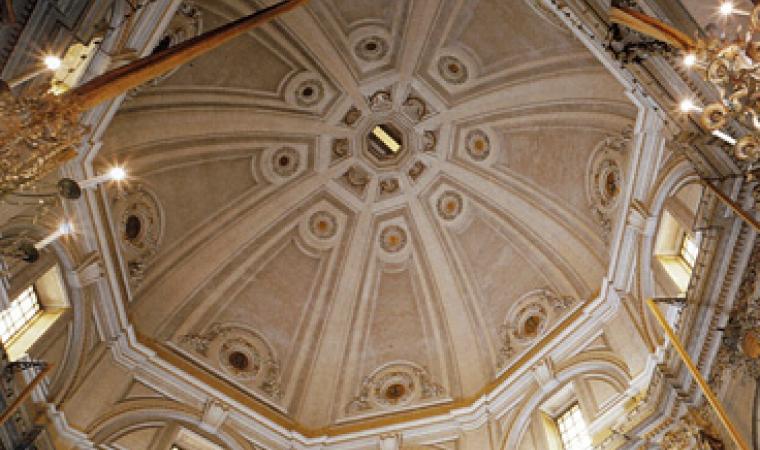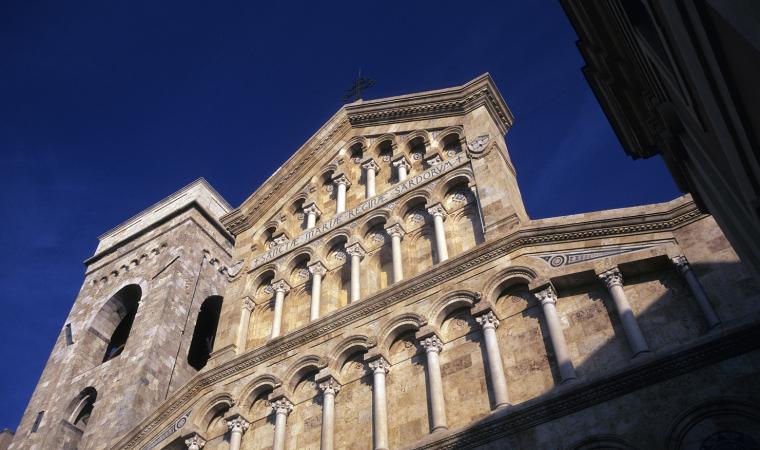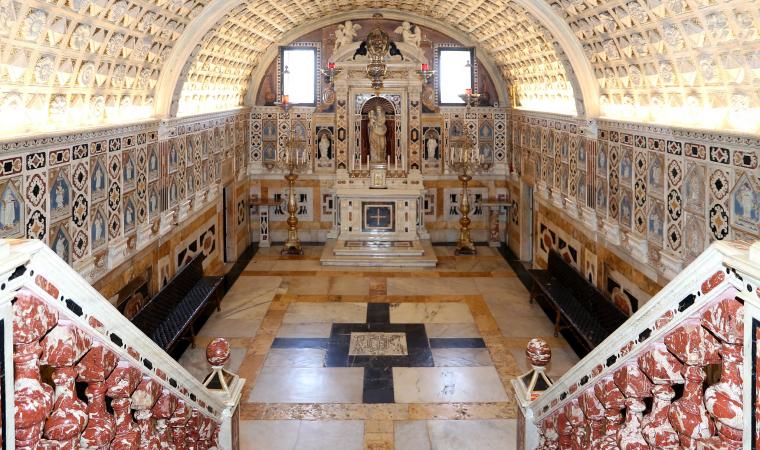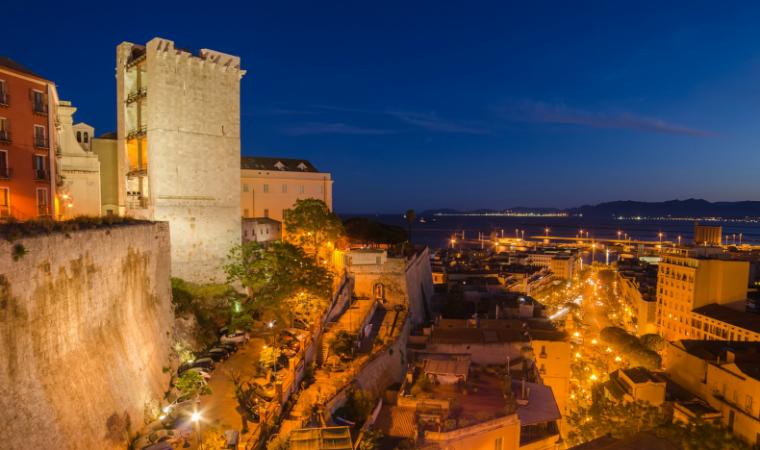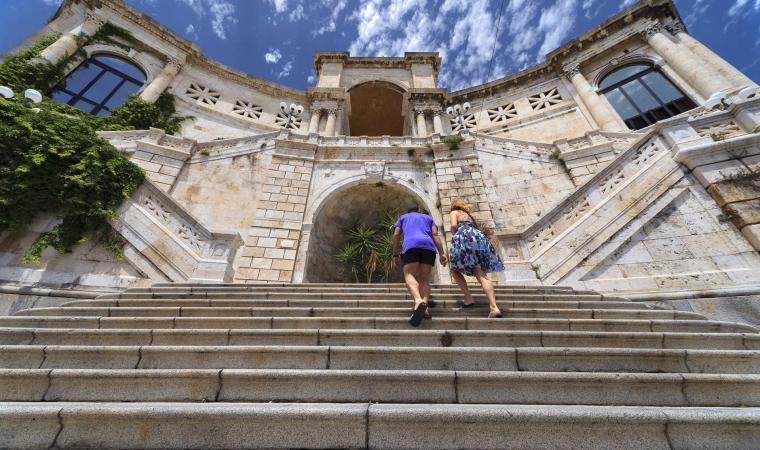Its domes are easy to recognise from numerous panoramic points in Cagliari, its steps are set between the narrow streets of the Stampace district in Cagliari and it is one of the most spectacular sights in the city centre. Today, the Church of Sant’Anna presents itself in recent Baroque style, but its origins probably date back to the 13th century, closely linked to the history of the city. The Judicate capital of Santa Igia was wiped out around the middle of the 13th century by the Pisans, who established the centre of their dominion in the Castello district, which was especially fortified. The population settled at the foot of the fortifications, giving rise to Stampace, and elected Sant’Anna as their patron saint, building a small church in her honour, probably Romanesque style. The medieval sanctuary was demolished in 1785 and the foundation stone of the new church was laid based on a design attributed to the Piedmontese architect Giuseppe Viana. Construction proceeded very slowly and the inauguration took place in 1818, when the bell towers and main altar were still missing. The interiors were completed at the beginning of the 20th century and the second bell tower in 1938. A few years later, the bombings during the Second World War caused collapses and serious damage to the furnishings. The church didn’t open again for worship until after the war. The various ups and downs gave rise to a sarcastic saying used by the people of Cagliari: sa fabbrica de Sant’Anna, which, in the city, means something interminable.
There are three flights of steps before the building. At the end of the steps, you will find yourself in front of the Piedmontese Baroque-style façade, with a concave central part. The façade is divided into two orders: in the lower one, there are two pairs of columns with Ionic capitals framing a door, above which there is a split tympanum and a rose window; the upper one is decorated with pilasters. The two impressive bell towers emerge from a position set back from the façade. The interior has a single nave with a transept, covered by three domes. There are four chapels on each side, preceded by open arches on a cornice decorated with mouldings, on top of which there are the domes. In the presbytery area you will notice eight tribunes overlooking the altar, while among the furnishing elements that stand out, there is a marble statue of the Crocefisso dei Muratori, donated by King Carlo Felice, and a sixteenth-century wooden crucifix.
There are two other famous historic buildings of worship in Stampace, a stone’s throw from Sant’Anna, standing over underground cavities: the seventeenth-century Church of Santa Restituta, with a crypt that was a place of Phoenician and early Christian worship, then a Roman cistern, followed by a quarry and lastly a shelter used during the bombings; the other is the Church of Sant'Efisio, built on the cave considered the place in which the martyr was imprisoned, starting point of the biggest religious festival in the whole of Sardinia.

